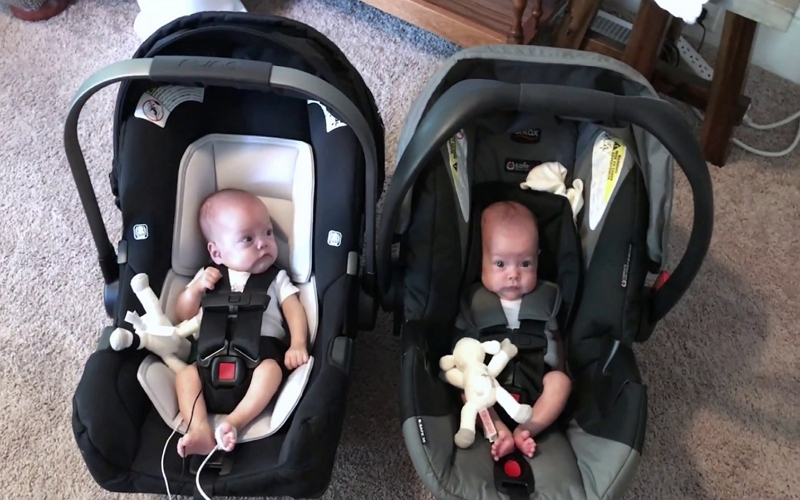When can my baby face forward in the car seat? This is a common question new parents ask. Reading this post will provide you with answers.
When your baby is ready to face forward in the car seat, you will know two main things. First, when they are over one year old and reach 20 pounds.

Second, when their neck can support itself without falling too far back or forward while sleeping in a rear-facing position.
If your child’s doctor gives the okay once reaching this milestone, feel free to make sure that their faces are frontward in the carseat. This means strapping them facing outwards until they reach 65 lbs., which typically occurs between age four and six years!
However, do not be surprised if your child decides they prefer riding backwards even after turning one; many kids simply like it better than looking sideways through the glass at passing scenery.
Again though, if they are over one year old and 20 lbs., you can feel free to try strapping them forwards in the carseat .
How can a 2-year-old journey in a car?
A child needs to be restrained correctly when travelling in a car. For instance, the law states that children under 12 years old must either sit in an appropriate restraint or wear one if they are tall enough and able to do so safely.
The safest place for all children under 13 years of age within vehicles fitted with seat belts in the rear seats – this will help minimise injury during collisions as well as provide better protection from side impacts.
It’s also recommended that older children travel on the back seat until they reach 145cm (about twelve-and-a-half).
In addition, it’s essential to have your baby properly secured into a suitable infant carrier or booster seat before you set off anywhere – it’s the law.
It is strongly recommended that children under 12 years of age, who have not yet reached 145cm in height, use an appropriate child restraint when travelling by car and always travel in the rear seat – this will help minimise injury during collisions and provide better protection from side impacts.
Please note: it’s illegal for anyone to carry a passenger under 14 years old without using an approved safety device (for example booster seats).
The only exception applies if they are exempt because their legs touch the floor or they can reach at least 175mm above their knees while sitting back against the vehicle seat with backs slightly bent; then they must be seated on a cushion that raises them sufficiently that their lower limbs do not touch the vehicle seat.
While many parents choose to use a baby capsule for their child, others have found that using a certified universal car restraint system can be an economical way to safely transport children in cars where there is no existing safety device available or when it’s not suitable for your own needs.
This option usually works out much cheaper than buying several different types of seats and capsules over time – you will only need one so long as your kids continue growing! When choosing which type of approved car restraint system best suits you and your family, consider:
Safety standards across Australia require all restraints sold in stores must meet specific requirements such as being crashworthy (with rigid internal parts), fitting securely into vehicles with easy installation, being easy to use and suitable for the age group they are designed for.
What car seat should a 2-year-old have?
Car seat safety is important for children of all ages, but it’s especially crucial when they are still toddlers. Here are some tips to help you choose the right car seat for your two-year-old child.
What kind of car seat does a 3-year old belong in?
With a toddler, you will probably be looking for some kind of booster seat. These seats elevate the child so that they can use an adult safety belt and give them the security of knowing that they are properly restrained in case there is a crash.
The first thing to know about getting your child into this type of carseat is that all children under 13 should ride in the backseat of any vehicle at all times, whether or not it has airbags.
This also includes anyone over 40 pounds as recommended by most paediatricians because their bodies don’t sit like adults do which means if there were ever more than one person sitting upfront with an accident occurring those people would be hit twice as hard by having someone else between them and the airbag.
What is a Group 0+ car seat?
A group 0+ or 0- to 13kg baby carrier is a type of child restraint that can also be used as a travel system. It has an integral harness and the baby sits in the fully reclined position, usually facing towards you. This provides more comfort for your small infant while out and about travelling safely with their parent(s).
A good example would be our Maxi Cosi Mico AP Infant Car Seat which will fit most pushchairs on the market today e.g., Phil & Teds Dot, Mountain Buggy Nano etc. but always check compatibility before purchase!
Both products are from reputable brands so they’ll last until your little one no longer needs this type of child restraint.
